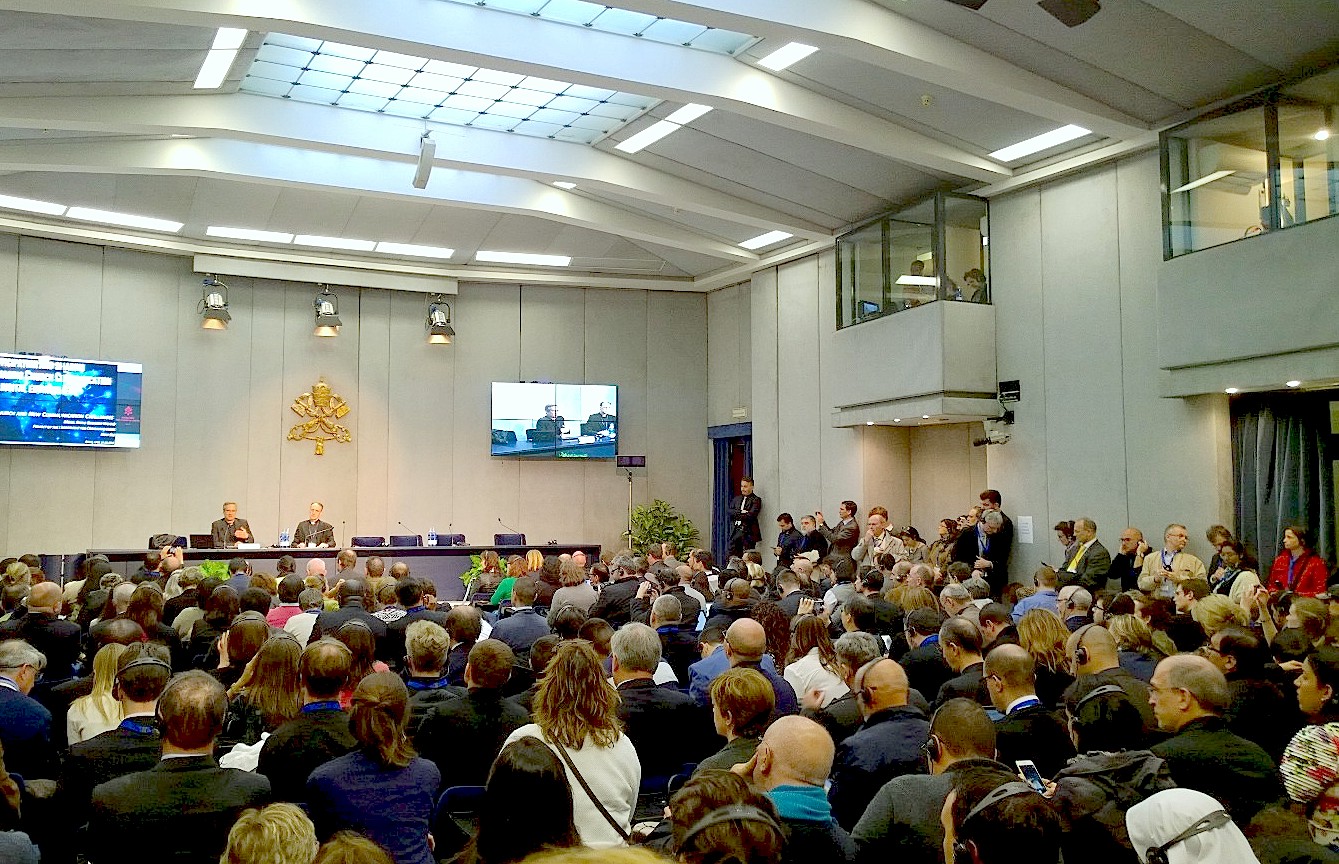The reform of the Vatican’s various communications offices is underway and will end in 2018, unifying a very articulated structure. Although there will be cuts in the budget in the structure that today has more than 600 workers, essentially an effort will be made to optimize the communication and economic systems, keeping in mind the changes that have occurred in today’s world.
This was reported today by the Prefect of the Secretariat of Communication, Monsignor Edoardo Vigano, in a conference to the participants in Rome of the course of the University of the Holy Cross, which began yesterday and will end tomorrow. The annual course brings together both Church and secular journalists to consider the Church’s communication in a digital context.
The reform is understood not only of an economic type and with criteria of sustainability, explained the Prefect. “The reform stems from the idea that the most important patrimony is that of human resources,” he said, “not forgetting that with the reform an economy of scale comes into force, which makes possible a reduction of the costs, and this is important.”
And this because we are responsible for money that is not personal, but of the Holy See, fruit of offerings and donations, etc. “This requires a very high responsibility and, therefore, every euro spent must have a justification of an apostolic type,” he added.
It is “not about a coordination, or about changing the names of roles, but about the processes of communication and also about the means that form part of it,” so that it is “the most effective possible in keeping with the mission of the Church.” All this means reclassification, formation and updating processes.
The Prefect of the Secretariat of Communication said that talk began on this process in 1996, in commissions, study groups, etc. The process led to a decision of the Council of the Nine Cardinals, a synodal discussion related to the reform of the Curia that called for the Pope’s decision, so that the results of the commissions and reports would find a feasible project. Thus “the Holy Father wrote a Motu Proprio, namely an act of government that came into force on June 29 of last year.”
For instance, it is necessary to know that the consumer of information on the Internet is also a transmitter. In other words, the scenario has changed, the means of accessing learning, the systems of knowledge. This new scenario — “without forgetting the great tradition of Vatican Radio and/or of L’Osservatore Romano — puts everything in an integrated framework of unitary management.”
The key points, indicated by the Prefect, “are new production processes. Today each means carries out its production in a vertical manner, and they must be thought in transversal ideas, a container that can serve all the outgoing channels, with attention to the interlocutors.”
One of the typical dangers of the whole Catholic world, he noted, “is to develop greatly a self-consoling rhetoric, which doesn’t happen in the business world.”
“I believe it’s more important to open the window and to see if our interlocutors are there, and if we meet their questions and give them appropriate answers,” he added.
How can realities with great glories be reformed? The method was christened as that “of the onion,” which is made of layers, extracts and, he joked, “it’s not called artichoke because an onion always makes a tear fall. In a process of reform, it isn’t pathological but yes physiological or natural for a tear to fall.”
The Prefect pointed out that the process began with a Motu Proprio, which in 2015 created the Secretariat of Communication, to which the Press Office and the Internet service were fused. The Pontifical Council of Communications was dissolved into the Secretariat because it became the Pastoral Theological Department. The Press Office continues and will be the office of institutional communication. The Internet service, instead, includes all the engineers and technicians of the Vatican Television Center and the Radio, and they are the vertebral column of the technological fusion.
In 2016 the Television and Radio have united, which is easy, but there is the difficulty of the Radio’s great redactions, with much personnel. Next year L’Osservatore Romano, the Libreria Editrice Vaticana, the photographic service and the typography will fuse.
In addition, the Secretariat created the Pontifex twitter account and Franciscus on Instagram. The moment of verification will be in 2018, with an economic consolidation at least in the economy of scale.

Msgr, Vigano at Holy See Press Office - ZENIT
Vatican Communication Reform Process Has 2-Year Plan
Reform team asks: Are we answering the questions our audience actually has, and with appropriate answers?


